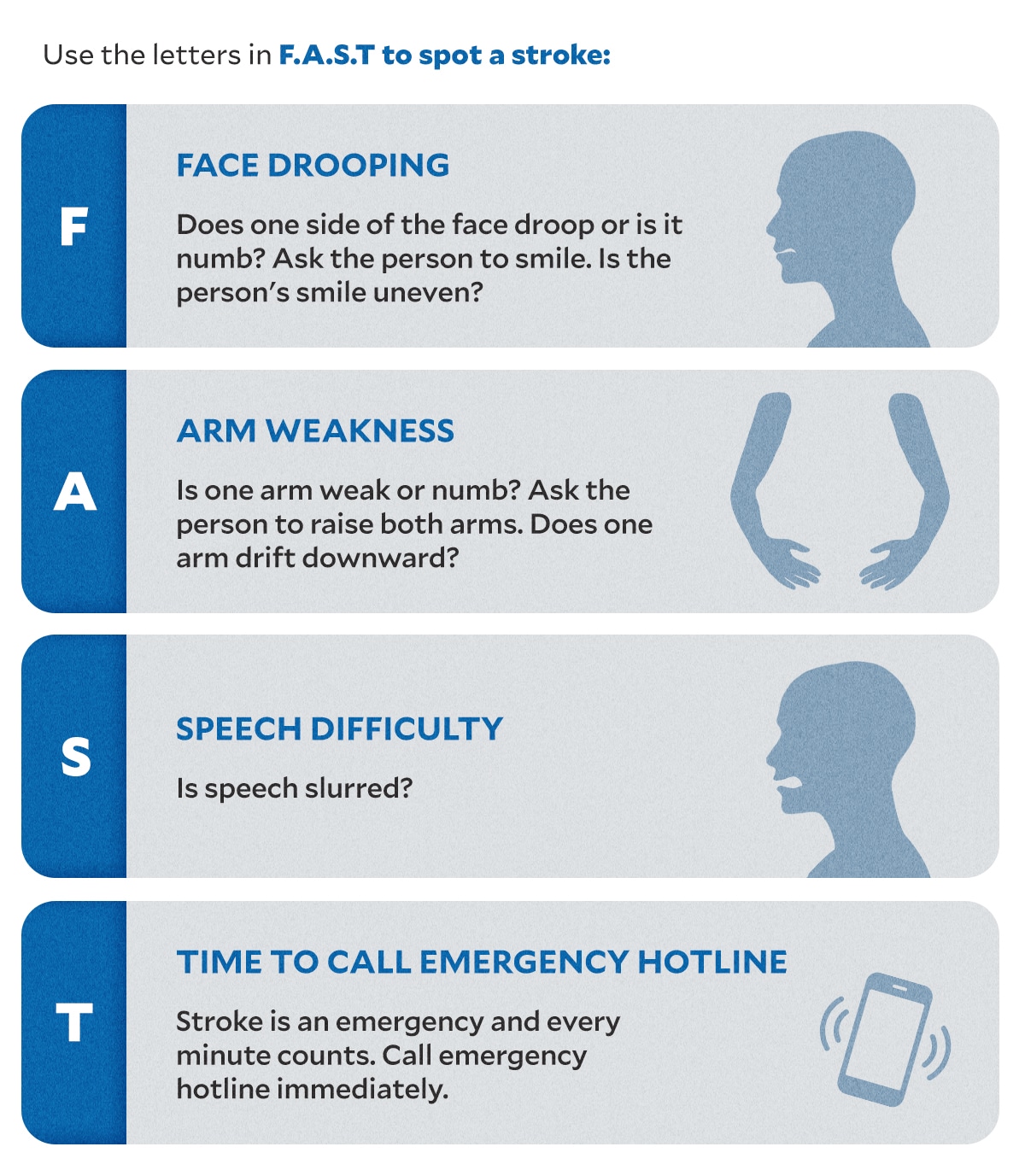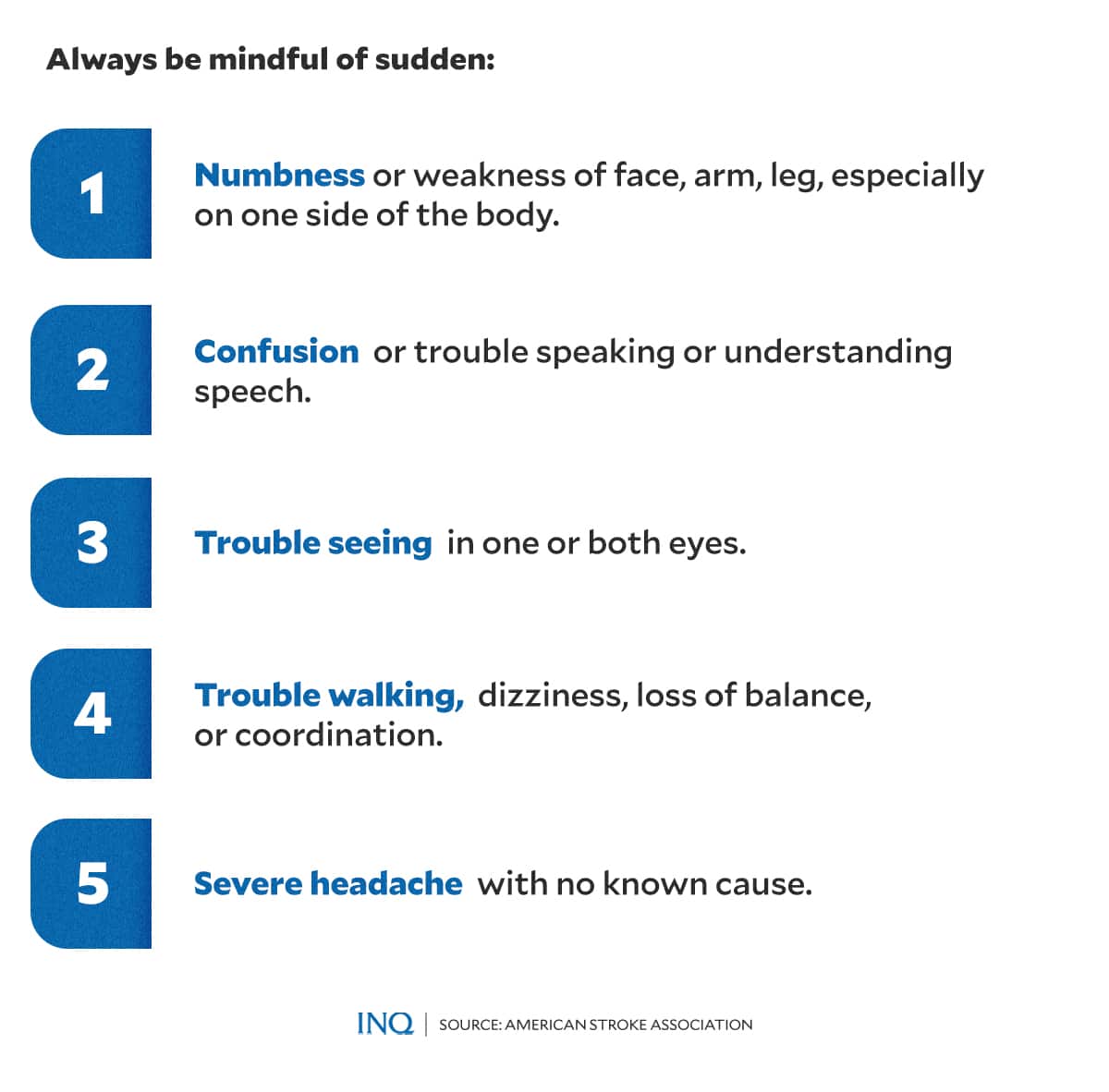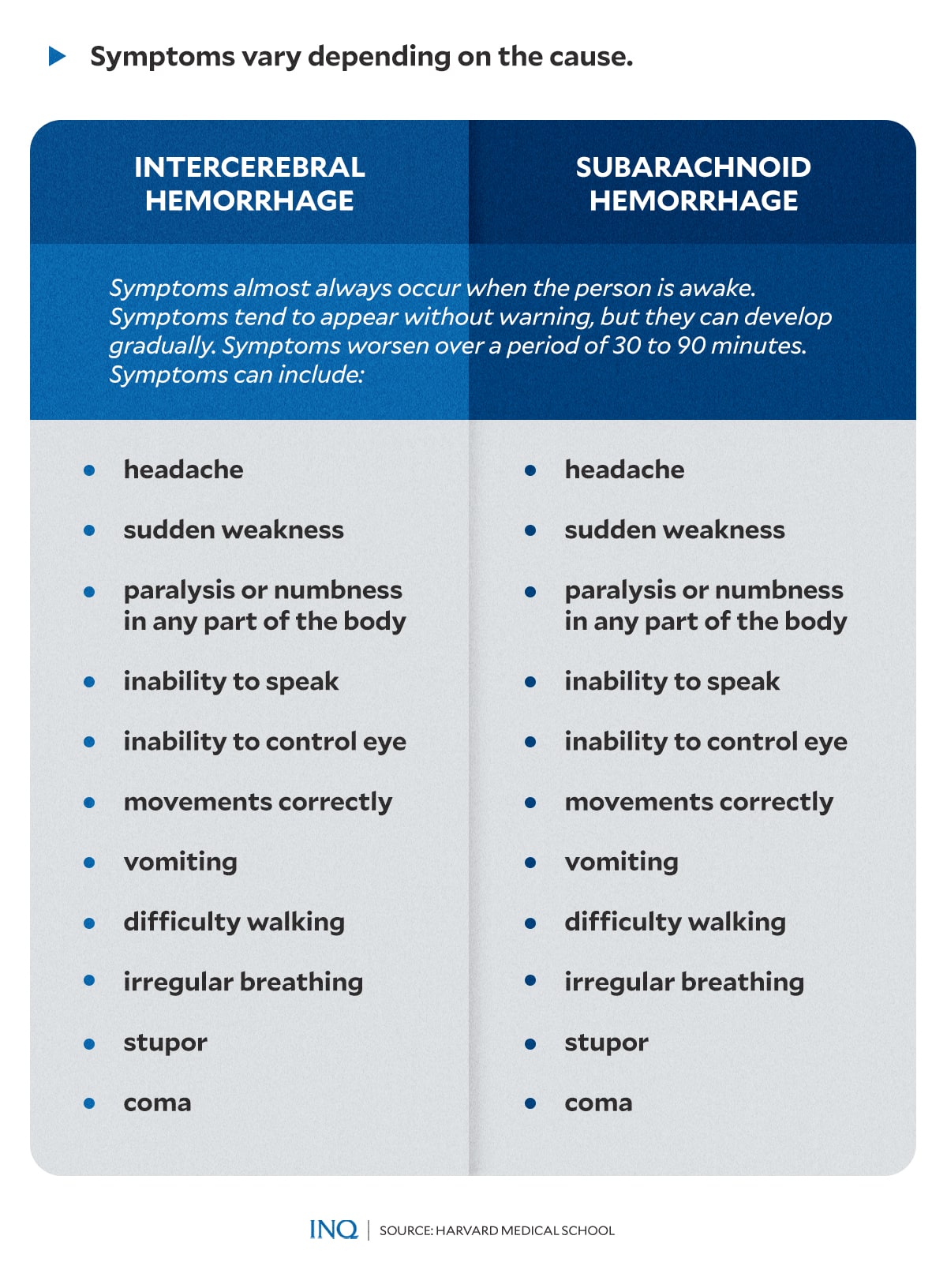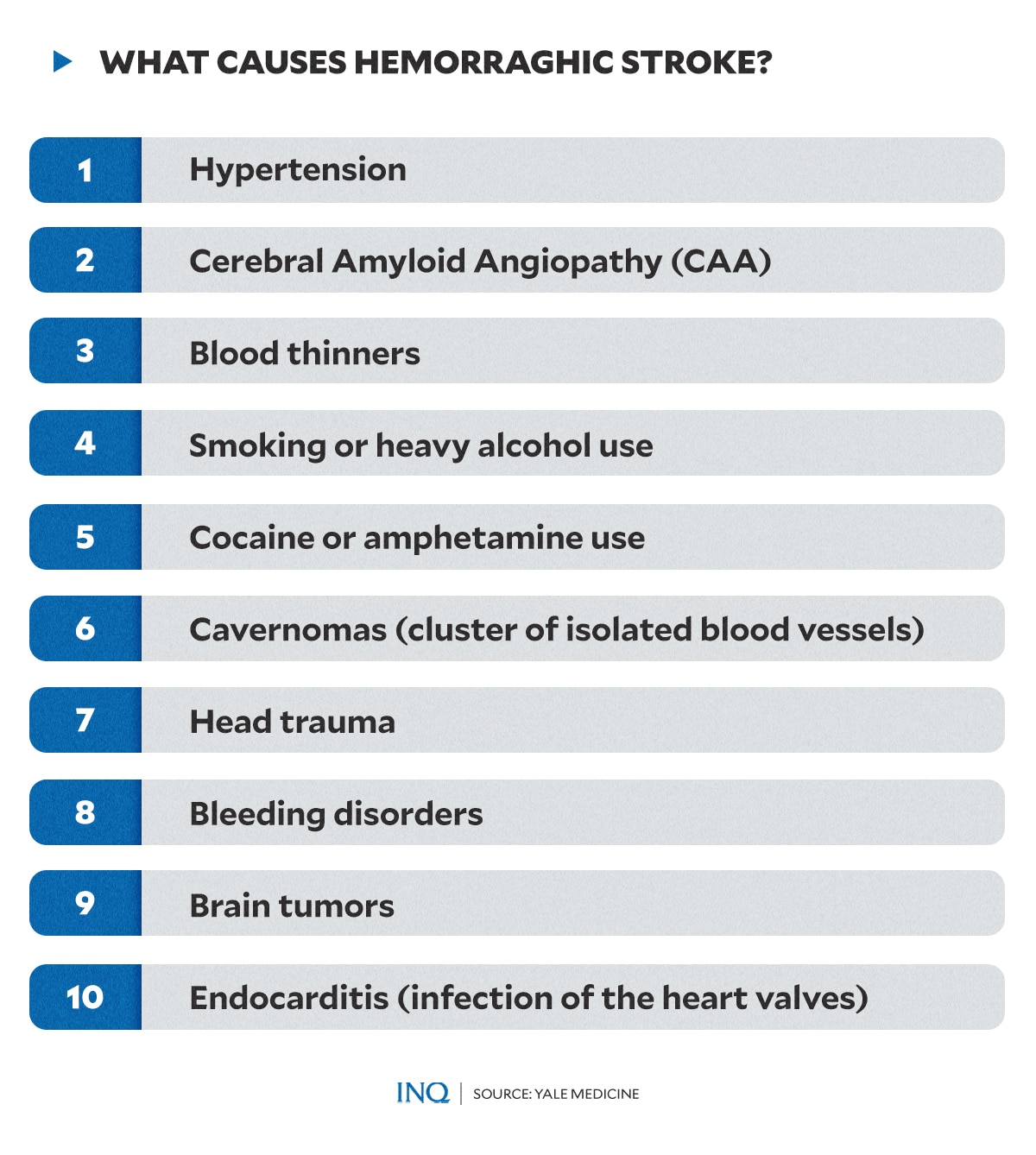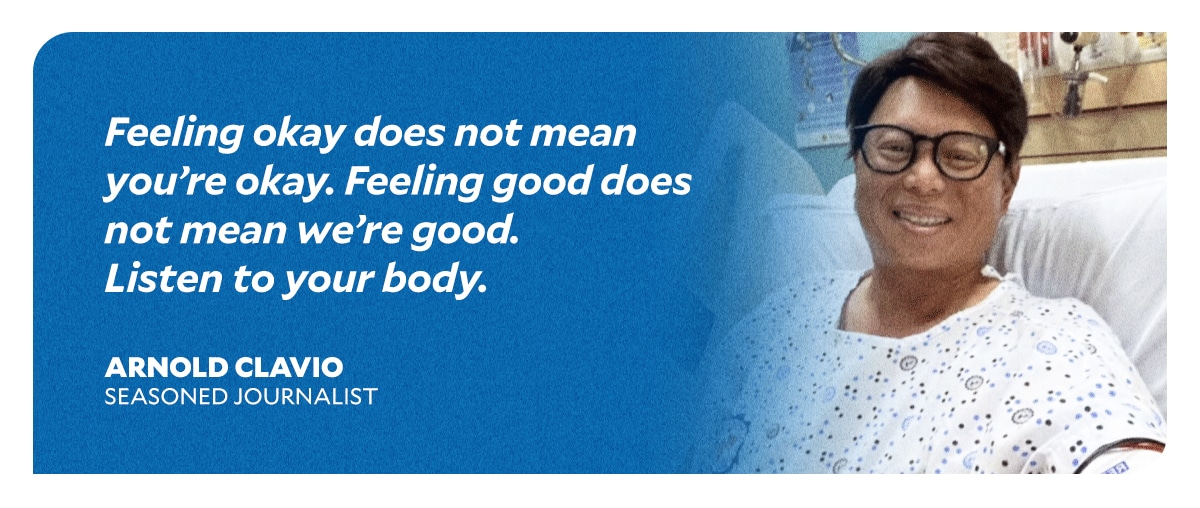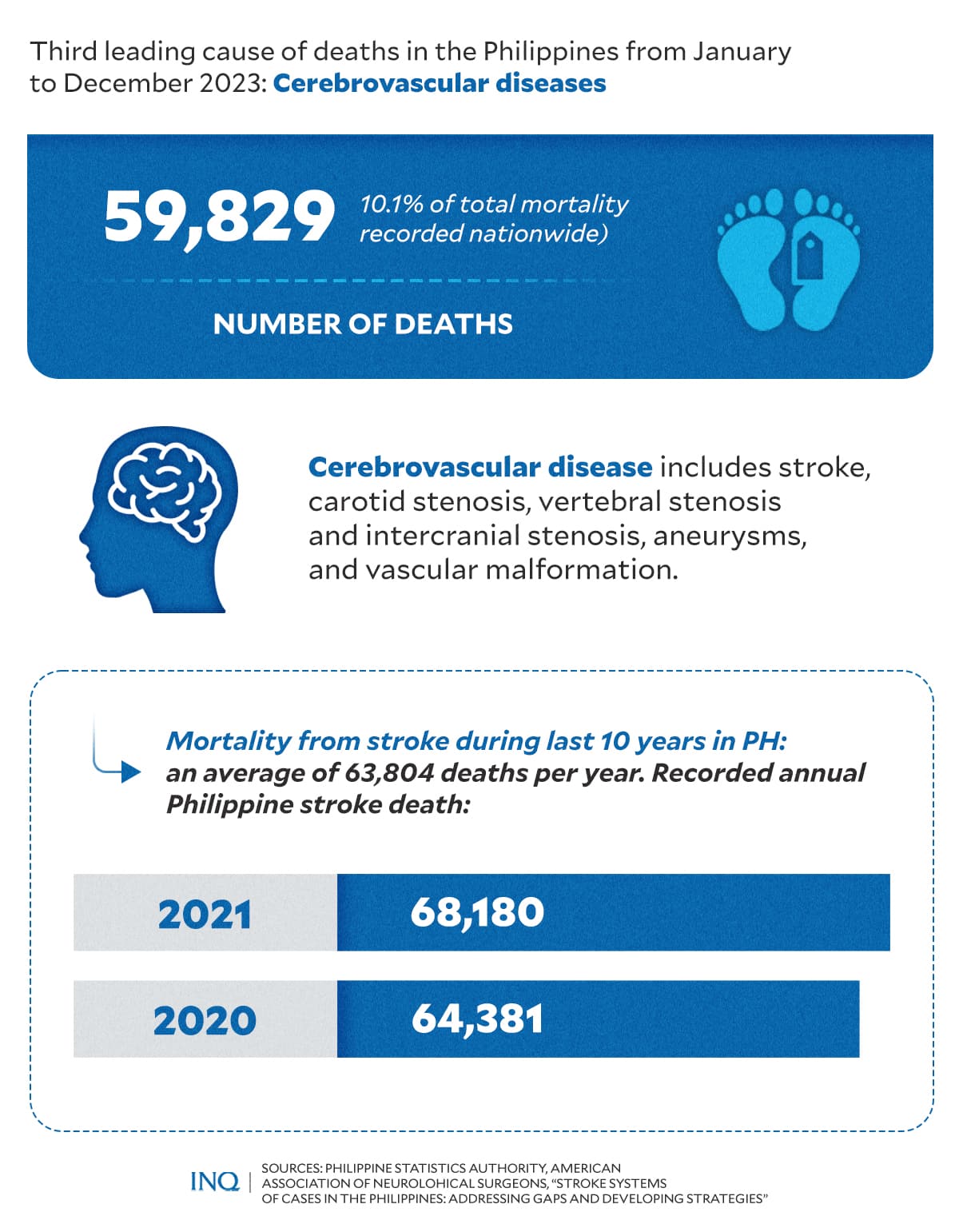MANILA, Philippines—”Feeling okay does not mean you’re okay. Feeling good does not mean we’re good. Listen to your body.”
This was seasoned broadcaster Arnold Clavio’s advice to the public following a recent health scare that almost cost his life.
Clavio narrated that on June 11, 7:10 p.m., he suffered from numbness in the right arm and leg while he was driving home.
According to him, he drove to a gasoline station and got out of the car, trying to walk, but found it difficult to do so.
He drove to an emergency hospital along the way, where tests were done. Doctors recommended that he take a CT scan test, too.
In a phone interview, the Kapuso journalist recalled that his day started as usual, adding that he was feeling “happy” earlier as he spent his time playing golf and preparing for Independence Day coverage.
Little did he know, however, that a scary turn of events would occur that day, an experience that he would later describe as a “wake-up call” and life-changing.
“Bale pauwi na ako galing sa golf course, sa Eastridge. While driving, biglang nag heavy numbness ‘yung right arm ko at right leg. It’s unusual (I was going home from the golf course in Eastridge. While driving, I suddenly felt heavy numbness in my right arm and right leg. It’s unusual),” Clavio said.
He continued saying he was able to stop at the nearest gas station. In a restroom, he immediately checked on a mirror to see if his face was drooping or if it was bloated, but no, they were not.
He noticed, however, that he had an unusual gait, which he likened to a “toddler walk” when he got out of his car to go to the restroom.
“Bumalik ako [sa kotse] ganon pa rin, ‘di pa rin ako malakad straight, nanginginig legs ko so I decided na dumiretso na ako sa nearest hospital (I returned to the car and it’s still like that, I still can’t walk straight, my legs were trembling so I decided to go straight to the nearest hospital),” he said.
Hemorrhagic stroke
Fortunately, despite the numbness in his right arm and leg, causing him not to feel the pedals for gas and brakes, Clavio was able to drive himself to Fatima Medical Center. He was sent to the emergency room, where he underwent some tests.
“They did some tests, ‘yung BP [blood pressure] ko 220 over 120, ‘yung sugar ko is 270 tapos nirecommend nila na magpa-CT Scan ako (They did some tests, my BP (blood pressure) was 220 over 120, my sugar level is 270 and they recommended I have a CT Scan),” Clavio told INQUIRER.net
“‘Yun nga, lumitaw na yung tinatawag na hemorrhagic stroke, nagkaroon ako ng slight bleeding doon sa thalamus area, sa left side ng brain (That was it, it turned out I had what they call hemorrhagic stroke, there was slight bleeding in the thalamus area, the left side of the brain),” Clavio said.
He added, quoting test results, that the affected area was the part of the brain responsible for sensation and muscle control, which explains the numbness.
Clavio was quickly transferred to St. Luke’s Medical Center in BGC.
He was brought to the hospital’s Acute Stroke Unit, where the doctors observed his condition and brought down his blood pressure and blood sugar levels.
Clavio’s health scare would serve as a health warning to others, but what do we really know about hemorrhagic stroke?
According to Harvard Health Publishing, a hemorrhagic stroke is “bleeding or hemorrhage that suddenly interferes with the brain’s function.”
Hemorrhage is divided into two categories, depending on where the bleeding occurred and the cause of the bleeding:
Intra-cerebral bleeding: The bleeding is caused by a broken blood vessel in the brain. Among the risk factors are high blood pressure (hypertension), heavy alcohol use, and advanced age.
Harvard Health Publishing explained that symptoms for this category “almost always occur when the person is awake” and “tend to appear without warning but can develop gradually.”
The symptoms, which can worsen over a period of 30 to 90 minutes, can include:
- headache
- sudden weakness
- paralysis or numbness in any part of the body
- inability to speak
- inability to control eye movements correctly
- vomiting
- difficulty walking
- irregular breathing
- stupor
- coma
Subarachnoid hemorrhage: The bleeding from a damaged blood vessel causes blood to fill a portion of the space between the brain and the skull, which mixes with the cerebrospinal fluid that cushions the brain and spinal cord.
When subarachnoid hemorrhage is caused by an aneurysm (an abnormal swelling or bulge in the wall of a blood vessel), symptoms can include:
- headache
- sudden weakness
- paralysis or numbness in any part of the body
- inability to speak
- inability to control eye movements correctly
- vomiting
- difficulty walking
- irregular breathing
- stupor
- coma
What causes hemorrhagic stroke?
Yale Medicine noted that most hemorrhagic strokes are caused by hypertension, which can result in a ruptured artery in the brain. Both hypertension and smoking are considered risk factors for developing aneurysms (Clavio had ceased to smoke many years ago, though).
For older patients, hemorrhage is commonly caused by a condition called “cerebral amyloid angiopathy (CAA).” This condition, Yale Medicine explained, can cause smaller asymptomatic “micro-bleeds” in the brain “and a higher risk of a large hemorrhage that can cause stroke-like symptoms.”
Other possible causes include:
- Blood thinners
- Smoking or heavy alcohol use
- Cocaine or amphetamine use
- Cavernomas (cluster of isolated blood vessels)
- Head trauma
- Bleeding disorders
- Brain tumors
- Endocarditis (infection of the heart valves)
In Clavio’s case, he explained that hypertension was the main culprit, coupled with his pre-existing medical conditions such as diabetes.
“Diabetes can cause high blood [pressure] […] ‘Yun ang nag cause ng rupture,” said Clavio.
He admitted that prior to the health scare, he did not monitor his blood pressure regularly.
Doctors told Clavio he was “lucky” as his blood pressure went as high as 220.
“Ang good news, mga small veins [lang ang naapektuhan], hindi siya yung main artery. Sabi nga lucky pa raw ako to survive kasi ang ruptured small veins lang (The good news is that small veins were affected, not the main artery. I was told I’m luck to survive because small veins were ruptured),” he said.
“Kumbaga kung ang brain natin ay puno, mga damo lang, hindi ‘yung sanga (It’s like if our brain is a tree, only the grass was affected, not the trunk),” he added.
“Thank you, Lord. I personally experienced your miracle,” Clavio wrote in a social media post.
READ: Life after stroke: Survivors support other survivors to get back on track
Know what to do
As soon as he felt the “unusual” numbness of his arm and leg, Clavio immediately checked for any warning signs of stroke.
He also shared that, at first, he suspected that the numbness was caused by a heart attack.
“Akala ko pa heart attack kaya umupo pa ako, kasi nga ‘di ba, isa sa mga tips yung umupo ka, huminga ka malalim at malakas para mag pump yung heart mo (I thought it was heart attack that’s why I sat because, isn’t it a tip to seat, breathe deep and strong to let the heart pump),” he said.
“Eh wala naman ako chest pain kaya sabi ko, ano ‘to, I want to know (But I didn’t have chest pain so I said what’s this, I want to know), he added.
Clavio attributed his quick thinking to what he had learned from his previous television documentary show “Emergency” and advice and tips from experts in news reports that involved similar situations.
The American Stroke Association stressed that it is crucial to remember the “F.A.S.T. warning signs” to asses or spot a stroke.
The acronym refers to:
- F: Face drooping – Does one side of the face droop, or is it numb? Ask the person to smile. Is the person’s smile uneven?
- A: Arm weakness – Is one arm weak or numb? Ask the person to raise both arms. Does one arm drift downward?
- S: Speech difficulty – Is speech slurred?
- T: Time to call the emergency hotline – Stroke is an emergency and every minute counts. Call the emergency hotline immediately.
The US-based organization also advised the public to watch for sudden symptoms such as:
- Numbness or weakness of face, arm, leg, especially on one side of the body.
- Confusion or trouble speaking or understanding speech.
- Trouble seeing in one or both eyes.
- Trouble walking, dizziness, loss of balance, or coordination.
- Severe headache with no known cause.
Patients or witnesses should also note the time when any of the symptoms first appear.
‘Listen to your body’
Despite early symptoms, the American Association of Neurological Surgeons argued that stroke often occurs with “little to no warning” and “the results can be devastating.”
This was echoed by Clavio, who clarified that prior to his hemorrhagic stroke, he had never felt any of its symptoms nor experienced hypertension.
“May mga neuropathy ako na caused [by] diabetes, like neuropathy sa fingers pero hindi siya yung talagang buong right part ng body (I have neuropathy caused by diabetes, like neuropathy in the fingers but not really the entire right side of the body),” Clavio stressed.
“Walang [warning signs] kaya hangga’t hindi ko nalaman sa ER, talagang clueless ako kung anong nangyayari (There’s no warning sign so until the ER, I was really clueless what happened),” he added.
Following the health scare, Clavio advised the public to always listen to their body and regularly check their blood pressure levels.
“First time, ‘di naman kasi ako hypertensive. Kaya nga pag may nangangamusta sa akin sinasabi ko i-check niyo BP niyo (This is the first time because I’m not hypertensive. That’s why if anyone asks me how I am, I always say check your BP),” the newscaster said.
“‘Wag tayong maging complacent, kung alam mo na may health problem ka,, magpa-regular check-up ka. Consult doctors,” he continued.
“[K]ahit healthy tayo, i-check natin yung BP natin. ‘Yun ang culprit eh, lalo pag diabetic ka. Traydor ang hypertension! Always check your BP,” he stressed.
Clavio shared he lost weight and tried to maintain his active and healthy lifestyle due to his diabetes. This, however, did not protect him from experiencing a stroke.
“High blood pressure is the main cause of hemorrhagic stroke, but other conditions like Type 2 diabetes and high cholesterol can contribute,” said Dr. Tony Leachon.
Leachon reminded the public to eat a balanced diet and maintain a healthy weight.
“Many conditions related to your circulatory and heart health can lead to stroke,” he added.
Stroke claims lives of millions
According to the World Health Organization (WHO), stroke is the second leading cause of death worldwide. In 2020, there were 6.6 million recorded deaths associated with stroke.
That number is expected to go up as high as 9.7 million worldwide by the year 2050.
In the Philippines, data from the Philippine Statistics Authority (PSA) showed that cerebrovascular diseases—which include stroke—were the third leading cause of mortality in 2023.
A study noted that during the last 10 years, the mortality rate from stroke in the Philippines “remains high,” with an average of 63,804 deaths per year.
“In 2021, despite the COVID pandemic, the recorded annual Philippine stroke death was 68,180, increased from 64,381 in 2020,” the study noted.
However, the study’s authors stressed that these figures—based on data taken from death certificates—may not be accurate due to underreporting.
Related stories:
Arnold Clavio survives hemorrhagic stroke: ‘I experienced Lord’s miracle’
Stroke risk depends on blood type: study


